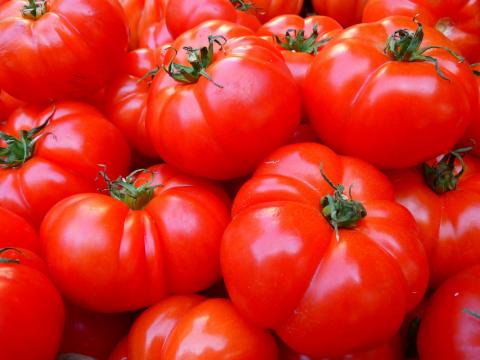Top Food Preservation Questions

One of the first workshops I presented for UNH Cooperative Extension was on home food preservation in 1988. That was the year of the major revision of the canning guidelines by the United States Department of Agriculture (USDA). Since that time, I have answered thousands of questions on home food preservation and presented many workshops. The following are some of the top questions that have been asked and the answers that have been given over the years.
Why do I have to process low-acid vegetables such as green beans, carrots, and beets using a pressure canner? Can’t I just process them in a boiling water canner for several hours?
The practice of not pressure canning low-acid vegetables can be deadly. Improperly home-canned green beans, carrots and potatoes have sickened several people and killed a few with botulism poisoning. One such outbreak less than 10 years ago, which sickened at least 25 people and caused one death, was from improperly home canned potatoes made into potato salad for a church potluck. The potatoes were boiling water canned instead of processing using a pressure canner.
The reason to pressure can is the difference in temperature and time between a boiling water canner and a pressure canner. Boiling water canners don’t go above 212° Fahrenheit. Low-acid vegetables need to reach 240°F to destroy botulinum spores. The only way to achieve this temperature is by processing in a sealed pressure canner that reaches 240°F for the recommended processing time. Do not use an Atmospheric Steam Canner – those are only for high acid foods and run at 212F.
Can I leave out the salt when canning vegetables and meat, poultry & fish?
Salt is optional when canning vegetables, meats, poultry, and fish. Salt in those recipes is for flavor and does not affect the canning process. On the other hand, salt is necessary when making pickles and relishes. Do not eliminate the salt in any canning recipe that does not say salt is optional. Use canning salt when canning. Regular table salt has iodine and fillers that can cause jars to appear cloudy; making it difficult to discern if the jar is cloudy from the table salt or spoilage.
Why do I have to process jars of food such as jams and pickles?
UNH Cooperative Extension has been teaching for at least 34 years that open-kettle canning is not safe. Open kettle canning is the process of heating food to boiling, pouring it into a canning jar, screwing on a lid, setting the jar on the counter, and letting the heat of the jar “seal” the lid to the jar. This process is not safe because the jars don’t reach the right temperature for the correct amount of time to destroy spoilage organisms, yeasts and molds that can enter a jar while getting the product ready for processing nor do the jars form a good vacuum seal. It goes without saying that sealing jam and jelly jars with paraffin wax is not recommended. That practice went away in the 1980s.
Do I really need to acidify tomatoes prior to canning them?
The acid in tomatoes and tomato products may be low enough to allow bacterial growth. Tomatoes that are acidified for canning are done so to prevent botulism poisoning and other bacterial concerns by a combination of acid and heat. To ensure the safety of whole, quartered, crushed or juice tomatoes, acidify by adding 1 tablespoon of bottled lemon juice or ¼ teaspoon of citric acid per pint. For quarts use 2 tablespoons of bottled lemon juice or ½ teaspoon citric acid. Bottled lemon juice is recommended because it provides a consistent acidity level. Acidify tomatoes if you process them in a boiling water canner or pressure canner.
I have a delicious homemade salsa recipe I would like to preserve. Can you tell me how long it takes to process it?
The recommendation is to use current, tested recipes for all canned foods including salsa. The heat processing method required for a safe canned product is determined by the pH or acidity of the specific food being canned. Salsas are a combination of acid ingredients (tomatoes), and low acid ingredients (peppers, onions, and garlic). The amount of ingredients and the addition of other acid ingredients, like vinegar or lemon juice, affect the pH of salsa. USDA uses special equipment to scientifically test each recipe to determine the processing method and time. Since your recipe has not been tested for canning and the scientific testing equipment is not available for home testing, processing methods and times cannot be recommended for your recipe.
The same consistent message about home canning has been given by UNH Cooperative Extension for over 100 years -- follow the latest USDA guidelines and use tested recipes from reputable sources such as any Cooperative Extension office nationwide, USDA Complete Guide to Home Canning, National Center for Home Food Preservation, and the Ball® Blue Book.
For answers to your home food preservation, contact UNH Cooperative Extension’s Yard & Garden Center at 1-877-398-4769 or email answers@unh.edu. The Center is open Monday – Friday from 9:00 am - 2:00 pm.
Where trade names such as Ball® are used no discrimination is intended and no endorsement is implied by the University of New Hampshire Cooperative Extension.
